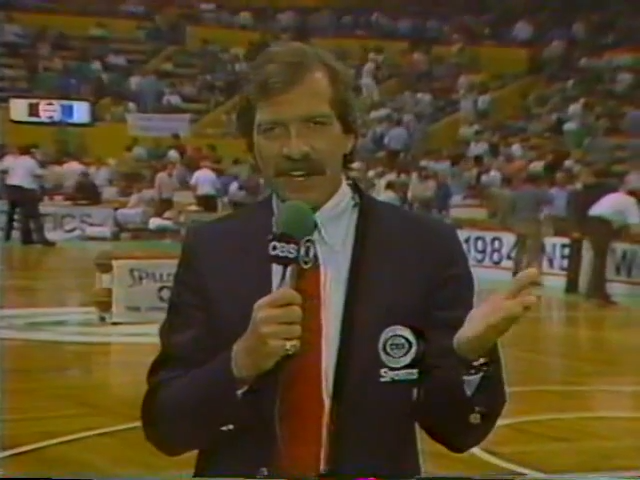The Closeout
So what are we talking about when we discuss a “closeout?”
Not a series. Boston and Milwaukee’s busboy technique in its Game 4 experience isn’t the example we’re searching for. Those community commitments are bus-wide and bench-long and they involve multiple people bouncing ideas, often profane ones, off one another.
In this instance we’re prattling about the part of a game where a defender tries to disrupt an offensive player’s field goal attempt, usually a jumper, by closing out on the shooter’s workspace.
What are we after, here?
Can’t block it, you’re taught not to try to block it, even if the act of a “closeout” demands you approximate every part of the buildup behind a superstar swat — the approach, the launch toward the ball at the height of its jump, the lunge to meet the ball you’re all counted upon to cradle.
We’re all Bill Russells in this development, in the moments that build toward the shooter’s release, yet contact with the ball isn’t what we’re after.
What we’re here for is a network with the shooter’s noggin. With the shooter’s hopes and fears and insecurities and strengths and, eventually, commitments. What the defender is trying to accomplish, in a closeout, is the encouragement of an absence of self.
The defender can shriek and flap pell-mell, just as long as no contact with the opponent is made.
It’s allowed to lunge at the shooter as if nothing rings as inappropriate outside of the accidental grope — an inadvertent high-five, an unasked-for hip-check, Bruce Bowen using Pee-Wee’s shoe mirror to peek up the swingman’s shorts.
The ambition is to encourage the shooter to believe in the presumption of a block, even with the brain and body objecting loudly to these sorts of implausible notions.
From Marcus Morris Sr. to Myer Skoog, nobody really thinks the jumper’s gonna be blocked, yet the enormity of the exercise demands you do every damn thing in your power to avoid the stinging ignominy of feeling your jump shot shoved right back in your, dumb, face.
So the legs reach for something, either straining to lurch two sizes longer or peeling off midair laps — Wile E.-styled — in a bid to extend the length of this launch countdown.
The upper body fidgets. It’s already made its way into form, in at least the beholder’s eye, yet the shooter’s top half now has to consider just how many fundamentals to frantically abandon in order to save the sanctity of the shot.
(We’re still in midair, mind you.)
Arms question their place in line with another pair of limbs railing in from just a few inches away.
The elbow quivers, it isn’t supposed to move an inch. Lungs leaden, the superficial muscles of the chest curse the swells of encroaching air, nobody here has ever felt heavier.
The brain spits through the suspense to deliver a reminder. Focus on the rim, dummy.
Or the goal, or the box behind it, or the warm entryway just above the top of the rim, the part that sips jumper after jumper at the end of the stool until it’s time to call a cab and head home to Vera.
Reggie Miller liked to watch the ball in rotation and Roger Brown was so blind he could barely see a rim to convene upon, everyone has commitments to desert and the closeout (or, “close-out”) is key in this come on.
So what does the shooter dare?
Squirm your way around the onslaught, maybe hang around long enough and invent something? That’s an unconditional surrender — a flailing, loopy jumper bent to avoid the oncoming defender can look as embarrassing and unappealing as a basic ball-to-hand swat.
It’s at this point that the voices stop ending sentences with a comma and the word “dummy.” Something soothing hits, and the good sounds return.
The ball might hurt a little but it’s nothing you can’t get over. Better to practice good habits and miss than to succeed briefly with a bad hitch. It looks funny and it’ll taste different but I promise you’ll like it.
It’s at this apex that the best intentions of defender and shooter bound forward.
One bent on keeping up every appearance, swatting at someone else’s attempt like it heaved out of someone four grades below you.
The other struck to remain steady at the sight of what doesn’t make sense.
The proximity of a defender’s hand and body should do absolutely nothing to the math created when leg and middle and arm and wrist and tip consort to let loose an object set on the path of an arc.
And defender’s rarely gonna block that shot. In fact, the coaches tell them not to explicitly try to.
In this instance, the last remaining one before release, the burden of encouragement falls on the shooter.
It’s up to them to let loose with what they know, some bold mix of expression and discipline. The liberation has to deliver its goal at the end, another nasty association between art and commerce.
The best thing you can do
in this moment
is release




